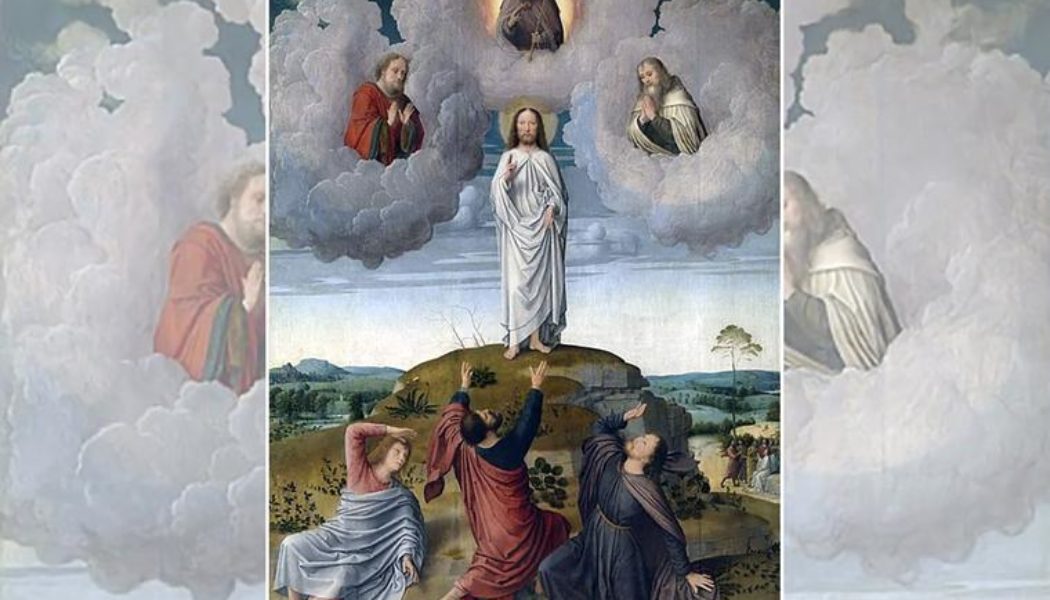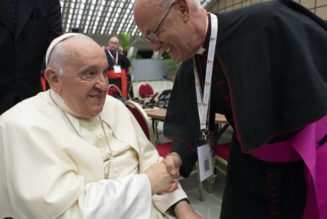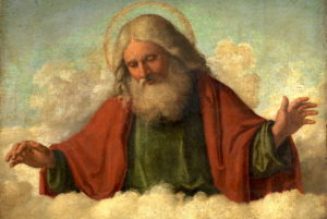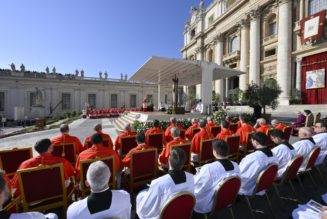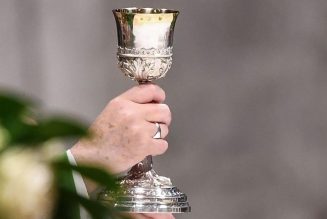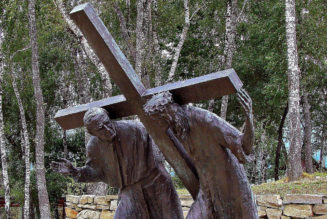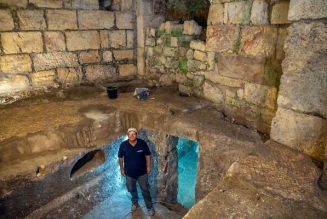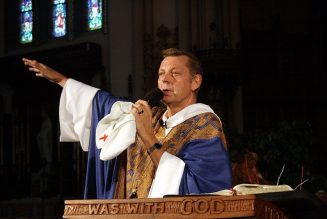
Catholics encounter the miracle of the Transfiguration every year on the Second Sunday of Lent. That Sunday’s Gospel early in Lent already points Christians — as Jesus pointed Peter, James and John — to the Resurrection.
The Church actually celebrates the Feast of the Transfiguration on Aug. 6 and, every few years, Aug. 6 falls on a Sunday, preempting the usual Sunday (in this case, the 18th Sunday of Ordinary Time).
Why do we celebrate the Transfiguration? We celebrate it because of what it tells us about Jesus and what it tells us about ourselves. Let’s consider each in turn.
What it says about Jesus: that he is God, the Messiah, the One whom Israel has been expecting for all these centuries. The Transfiguration reveals Jesus’ identity.
That he is God: “His face shown like the sun and his clothes became white as light.” Jesus’ divinity is revealed: the God “dwelling in unapproachable light” (Preface to the Fourth Eucharistic Prayer) shines forth in the man, Jesus Christ, showing them to be one.
Today’s First Reading, from Daniel 7, points to this same reality: God — “the Ancient One,” whose “clothing was bright as snow” — inaugurates judgment. To him comes the “Son of Man, coming on the clouds of heaven,” i.e., Jesus. We see here the mystery of the Trinity and the Divinity of Christ. It is no accident that, when Jesus quotes this same passage and applies it to himself during the Sanhedrin’s kangaroo court proceedings on Holy Thursday night (Mark 14:62), he is convicted of blasphemy. They knew — and rejected — what Jesus was claiming: his divinity.
Why Moses and Elijah? Simply because they represent the two most important streams of the Old Testament and Jewish thought. The most sacred part of the Old Testament is Torah — “the Law” — and Moses is the Lawgiver, in the sense that he hands on what he received on Sinai from God. The second most sacred part of the Old Testament is Nebiim — “the Prophets” — and Elijah stands at the head of the prophets. So, for Moses and Elijah to “converse with” Jesus reveals that here is the One for whom they waited, to whom the Law and Prophets both lead. Jesus will say as much later when, accompanying the disciples on the road to Emmaus, “beginning with Moses and all the prophets, he interpreted to them what referred to him in all the Scriptures” (Luke 24:27).
If that was not enough, the episode closes with the voice from the cloud, affirming, “’This is my Beloved Son: listen to him.’” Inasmuch as one cannot see the face of God and live (Exodus 33:20, cf. Genesis 32:30, Isaiah 6:5), the cloud is clearly God’s screen, his iconostasis, from behind which the Father’s voice comes. But God has made it possible for us to see the face of God: just look at Jesus Christ, for “he who sees me has seen the Father” (John 14:9).
The Transfiguration tells us not just about God but about ourselves. It tells us about our destiny.
The Transfiguration is not some isolated, “one-off” event. It was not just intended to buoy up three Apostles by pointing them to the then-future Resurrection. By being tied to the transfigured Jesus that emerges from the Tomb, it also points to our resurrection — the “resurrection of the body” on the Last Day. Easter is also not an isolated, “one-off” event. Easter set irreversibly into motion the conquest of death. The devil is defeated. Sure, he keeps on fighting, just like you could find some Japanese soldiers in the Pacific Islands who didn’t hear about the surrender after World War II. And while they could also inflict some casualties, the war was over.
The same is true of Christ’s victory over sin and death. The war is over. The effects of the Resurrection continue to spread through history. In nine days, we’ll celebrate the Assumption, which is also rooted in the Resurrection. Sinless Mary already shares her Son’s victory. And it all is summed up in the one article of the Creed, of our faith, which remains future tense: “I look forward to the Resurrection of the Body and the life of the world to come.”
Today’s feast, therefore, is fundamental both to knowing who Jesus is and who we are supposed to be.
Today’s feast is honored in art by the 15th-century Netherlandish painter, Gerard David (ca. 1450-1523), which can be found in the Church of Our Lady in Bruges, Belgium. We don’t know a lot about David, who seems to have spent much of his artistic career in the Antwerp-Bruges area, today’s Belgium.
The painting, representative of the emerging Netherlandish School, stands on the transition between the medieval and Renaissance. Unlike pure Gothic art (Berna da Siena might be a good example), scenery and landscape appear in the painting. There’s a background, trees, and even fauna on the hill (Mount Tabor).
On the other hand, more in line with medieval art, the perspective is more two-dimensional: Jesus and the Apostles are flat. John, the youngest, is most likely on the left; Peter (in keeping with his centrality) is in the middle; leaving James on the right.
Jesus is already transfigured, his right hand in blessing. (Once upon a time, blessings were administered with the thumb, index and middle finger up and the ring finger and pinky down, symbolizing the blessing of the Trinity and commemorating the divine and human natures of Christ).
Jesus’ interlocutors are in prayerful positions in clouds around him: Moses in red on his right, Elijah in the habit of a Carmelite on his left. The allusion is to Mount Carmel, where Elijah did battle with and defeated the false prophets of Baal (1 Kings 18:16-45), whose cult had infiltrated Israel.
I chose this painting today because, in contrast to many Transfiguration scenes, it explicitly includes God the Father. In that sense, the painting — while at odds with the Gospel account that speaks of the Father’s voice alone in the cloud — also connects it with today’s First Reading from Daniel, with the appearance of the Son of Man and the Ancient of Days.
